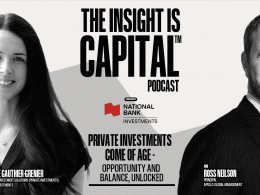Gold Market Diary (October 4, 2010)
For the week, spot gold closed at $1,319.10 per ounce, up $23.15, or 1.79 percent for the week. Gold equities, as measured by the Philadelphia Gold & Silver Index, rose 1.61 percent. The U.S. Trade-Weighted Dollar Index fell 1.65 percent for the week.
Strengths
- The gold price surged to a record high of $1,318 per ounce due to a weak dollar after more uninspiring U.S. economic data was released. This is the third week in a row that the gold price has reached a new record.
- Under the Central Bank Gold Agreement, participating members sold 96 percent less gold this year than last year. This change in direction is a major shift. Recent research conducted by Bank of America Merrill Lynch showed that adding 8 to 20 percent gold to a currency portfolio, currencies being predominately the medium in which central banks maintain reserve balances, had a significant effect in lowering the overall volatility of the pool of reserve regardless of the directional move in gold prices.
- According to a fund manager of the Teacher Retirement System of Texas, gold’s lack of correlation to other assets makes it a key component of a fund portfolio. He said, “From a portfolio manager’s vantage point, it doesn’t matter what gold does, if it goes up or down. What matters is what happens to your whole portfolio, and that is really the key about gold from a pension fund perspective.”
Weaknesses
- Last year PIMCO used the phase “new normal” to wake up investors to the notion that we may be in for an extended phase of below-average economic growth. PIMCO may be right and current conditions seem to support its arguments. Keep in mind that below-average economic growth somewhat implies that you might earn better returns by being invested in bonds versus equities, with the former being PIMCO’s value driver as a company.
- This week Ken Fisher, the billionaire chief executive officer of Fisher Investments Inc., dismissed notions that developed economies face below-average growth. Fisher said the concept of a “new normal” is “idiotic,” pitting him against PIMCO. Fisher tells us, “The next 10 years are going to be just as good as the 1990s.” Fisher’s value driver is clearly tied to equity returns, which have been dismal for the past decade.
- Unfortunately, everybody has an axe to grind. Equity strategists at the major Wall Street banks have been telling us for at least the last five years that gold is in a bubble because they don’t have a product to sell that competes against gold.
Opportunities
- Billionaire investor John Paulson predicted that the price of gold could hit between $2,400 and $4,000 per ounce by 2012, based on monetary expansion and double digit inflation.
- Delegates at the London Bullion Market Association’s annual conference raised their forecast for the gold price in a poll conducted at the end of the event, with expectations for the price to reach $1,450 per ounce by next September.
- And for those naysayers who say gold is not money, this should be of interest. I was shown this week, by a longstanding employee, a 1908 U.S. Quarter Eagle Indian Head 2 ½ dollar gold coin given to him by his father. This legal tender U.S. coin has a net bullion content of 0.12094 ounces of gold, which is worth about $157 today, using a $1,300 gold price. In contrast, owning $2.50 in paper money in 1908 and assuming you earned interest equal to the inflation rate for the last 102 years, would only deliver a purchasing power today of about $60.
Threats
- Many analysts are forecasting a potential short-term pullback for gold. On average the gold price tends to decline 60 percent of the time in the month of October. However, November is, on average, the strongest month of the year for gains in the gold price.
- On the economic front, one in four homes sold in the second quarter were foreclosures and they sold, on average, at a price 26 percent less than non-foreclosed homes Bank foreclosures are on pace to set a new record with 1.2 million homes on the auction block. RealtyTrac noted that, at the current sales rate, it will take three more years to work off the inventory of foreclosed homes.
- South Africa’s ruling African National Congress agreed to explore greater state control of the mining sector, but made no shift in economic policy at one of the party’s biggest meetings in years, President Jacob Zuma said on Friday.









